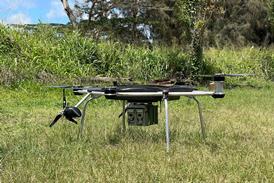Despite spending millions to develop a prototype jet to compete for a $16 billion contract, Northrop Grumman chief executive Wes Bush surprised market analysts on 26 January by striking a noncommittal tone about participating in the competition to replace the US Air Force's Northrop T-38C trainers with more than 300 new aircraft.
“Let me be clear, we have not reached a conclusion,” Bush says, addressing analysts on a fourth quarter earnings call.
That statement appeared to throw some analysts off-guard, including one who asked Bush whether request for proposals (RFP) released by the USAF in late-December has led to a price shoot-out among the potential competitors.
“I won’t go contract by contract, but there are others where our customer is transmitting the message in their RFP that while cost is critically important, they see a little bit of a trade space between cost, performance and value,” he says. “Those tend to be a little bit more interesting.”
As the incumbent supplier, Northrop had been one of four teams in a suddenly wide-open competition. On 25 January, Raytheon announced it was withdrawing as the prime contractor for the T-100, leaving Italian aircraft supplier Leonardo scrambling to consider its options weeks away from the bidding deadline. Boeing/Saab and Lockheed Martin/Korea Aerospace Industries also are competing to win the contract, which represents the largest single contract for an advanced military training jet in more than half a century.
The USAF's RFP has placed a major emphasis on reducing the cost and risk of the T-38C's replacement. As a designer of exquisite, high-performance aircraft, including the B-2 and B-21 bombers, Northrop may have to decide if the cost of winning the contract is worth the reward.
“It’s more a reflection of the discipline in our company, of looking through the cold, hard lens of what does the RFP tell you and what’s the business case look like,” Bush says.
Company investments tend to have a broader applicability outside of one competition, he adds. In addition to the T-X competition, Northrop's trainer design also could emerge as a candidate for a low-cost, light attack fighter, which the USAF chief of staff has recently endorsed as a near-term opportunity.
Northrop's Scaled Composites division has developed a prototype, which is registered with the US Federal Aviation Administration as the Model 400.
Source: FlightGlobal.com
















